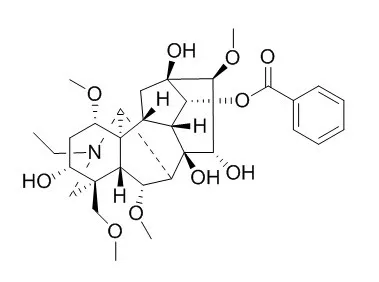Aconitum alkaloids mainly contain highly toxic aconitine (AC), mesaconitine (MA), and hypaconitine (HA) and less toxic Benzoylaconine (BAC), benzoylmesaconine (BMA), benzoylhypaconine (BHA), aconine, mesaconine, and hypaconine. The efflux transporters including P-glycoprotein (P-gp), breast cancer resistance protein (BCRP) and multidrug resistance-associated protein 2 (MRP2) can efflux toxicants to prevent poisoning. Our previous publication has proved that P-gp and BCRP contributed to the efflux of AC, MA and HA, which is demonstrated in the human colonic adenocarcinoma cell lines (Caco-2 cells), Mardin-Darby canine kidney cell lines transfected with MDR1 or BCRP (MDR1-MDCKII and BCRP-MDCKII cells). However, the role of MRP2 remains uncertain.
METHODS AND RESULTS:
The MRP2-MDCKII cells were used to determine the efflux ratios (Er) and intracellular amounts of Aconitum alkaloids. In addition, the importance of MRP2 was further investigated with or without the MRP2 inhibitor, LTC4.
The Er values of AC, MA, HA, BAC, BMA and BHA in MRP2-MDCKII cells (6.4 ± 0.3, 5.9 ± 0.5, 2.2 ± 0.2, 1.6 ± 0.3, 1.7 ± 0.2 and 1.9 ± 0.2 respectively) were significantly higher than those in MDCKII cells, which were close to 1. In the presence of LTC4, the Er values of AC, MA, HA, BAC, BMA and BHA were reduced to approximately 1 and their intracellular amounts were also significantly increased in MRP2-MDCKII cells.
CONCLUSIONS:
MRP2 was involved in the efflux of AC, MA, HA, BAC, BMA and BHA, which would be useful for the safe application of these components or their herbs. |






 Cell. 2018 Jan 11;172(1-2):249-261.e12. doi: 10.1016/j.cell.2017.12.019.IF=36.216(2019)
Cell. 2018 Jan 11;172(1-2):249-261.e12. doi: 10.1016/j.cell.2017.12.019.IF=36.216(2019) Cell Metab. 2020 Mar 3;31(3):534-548.e5. doi: 10.1016/j.cmet.2020.01.002.IF=22.415(2019)
Cell Metab. 2020 Mar 3;31(3):534-548.e5. doi: 10.1016/j.cmet.2020.01.002.IF=22.415(2019) Mol Cell. 2017 Nov 16;68(4):673-685.e6. doi: 10.1016/j.molcel.2017.10.022.IF=14.548(2019)
Mol Cell. 2017 Nov 16;68(4):673-685.e6. doi: 10.1016/j.molcel.2017.10.022.IF=14.548(2019)